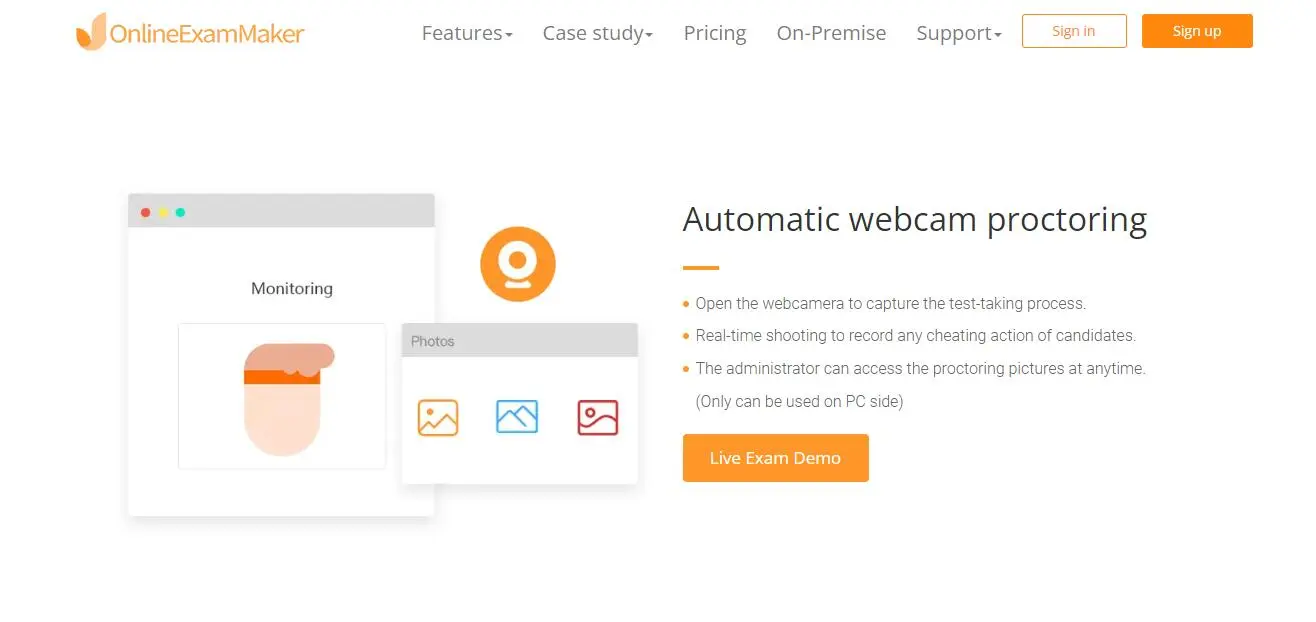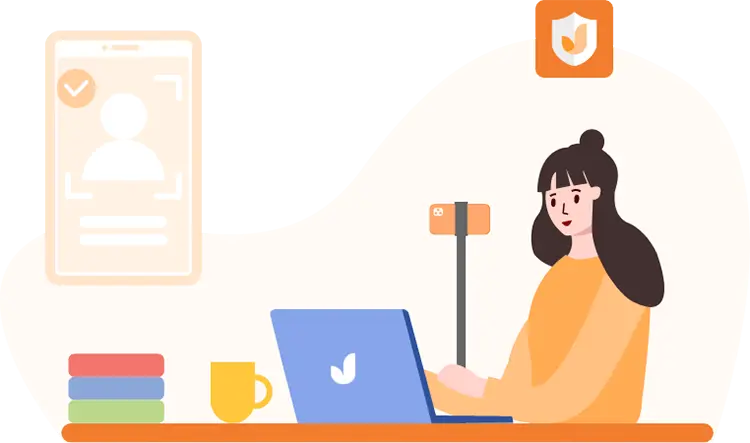The landscape of education has evolved significantly in recent years, with a notable shift towards online and remote learning. As education moved into the digital realm, the need for effective and secure methods of assessment and examination supervision became increasingly important. This led to the development of proctoring software, a technology-driven solution designed to ensure the integrity of online assessments.
Today, we will delve into the development, evolution, and key aspects of proctoring software, shedding light on everything you need to know about this innovative educational tool.
Historical Perspective
1. Early Forms of Proctoring: The concept of proctoring, or invigilation, has existed for centuries, with human proctors overseeing exams in physical classrooms.
2. Emergence of Online Learning: The rise of online education created a need for remote proctoring solutions, as traditional in-person proctoring was not feasible.
3. Development of Rudimentary Proctoring Tools: Early online exams often relied on basic methods, such as webcam monitoring and screen recording, to deter cheating.
You might like to know
Create a AI proctored quiz/assessment without any coding – try OnlineExamMaker today!
Evolution of Proctoring Software
1. Advancements in Remote Proctoring Technology: The demand for secure online exams prompted rapid advancements in proctoring software.
2. Transition to Automated Solutions: The shift from human proctors to automated proctoring software marked a significant development, enabling scalable and cost-effective solutions.
3. The Role of Artificial Intelligence and Machine Learning: AI and machine learning technologies have played a pivotal role in the evolution of proctoring, enabling intelligent monitoring and behavior analysis.

Why Online Proctoring Is Import for Online Exams?
Online proctoring plays a crucial role in ensuring the integrity, security, and fairness of online exams. As educational institutions and organizations increasingly embrace online learning and remote assessment methods, the importance of online proctoring becomes evident. Here are several key reasons why online proctoring is essential for online exams:
Preventing Cheating and Academic Dishonesty:
Online proctoring tools employ various methods, such as video monitoring, screen sharing, and AI-driven behavior analysis, to detect and deter cheating during exams.
They discourage students from seeking unauthorized assistance, accessing external resources, or collaborating with others, helping to maintain the integrity of the assessment process.
Maintaining Fairness and Equity:
Online proctoring ensures that all students are subject to the same exam conditions, regardless of their physical location.
It helps prevent situations where some students may have advantages, such as open books or assistance, that others do not, thereby promoting fairness and equity in assessment.
Securing Exam Content:
Online proctoring software can prevent the unauthorized distribution or sharing of exam questions, answers, or content.
It adds an additional layer of security to protect the confidentiality of exam materials.
Identity Verification:
Online proctoring verifies the identity of test-takers, often using biometric authentication methods like facial recognition or fingerprint scanning.
This ensures that the person taking the exam is indeed the registered student, reducing the risk of impersonation.
Deterrence Effect:
The presence of online proctoring acts as a deterrent to potential cheaters. Knowing that their actions are being monitored and recorded discourages dishonest behavior.
The mere knowledge of proctoring can promote academic honesty.
Accommodating Remote Learning:
With the growth of online education and remote learning, institutions need reliable methods to assess students remotely.
Online proctoring allows educational institutions to conduct secure exams for students located anywhere in the world.
Reducing Administrative Burden:
Automated online proctoring solutions can significantly reduce the administrative workload associated with in-person proctoring.
This can save institutions time and resources, especially when dealing with large numbers of remote exams.
Flexibility and Convenience:
Online proctoring offers flexibility for both students and educators, allowing them to schedule exams at their convenience.
This flexibility can lead to better student engagement and participation.
Compliance with Accreditation and Certification Standards:
For institutions and organizations seeking accreditation or certification, online proctoring can be a requirement to ensure the validity and credibility of their assessment processes. Compliance with recognized standards is crucial for maintaining the value of degrees, certifications, and qualifications.

Key Features and Functionality
1. Overview of Common Proctoring Methods: Explore various proctoring methods, including live proctoring, automated proctoring, and record-and-review.
2. Real-Time Monitoring of Test-Takers: Learn how proctoring software monitors test-takers in real time, including webcam feeds and screen sharing.
3. Detection of Suspicious Behaviors: Understand how proctoring software identifies and flags suspicious behaviors, such as unusual eye movements or multiple faces on screen.
4. Secure Exam Delivery and Lockdown Browser Integration: Explore the importance of secure exam delivery and the integration of lockdown browsers to prevent cheating.
5. Identity Verification and Biometric Authentication: Discover how proctoring software ensures the identity of test-takers through various authentication methods, including biometrics.
Challenges and Controversies
1. Privacy Concerns and Data Protection: Address the privacy concerns associated with proctoring software and the importance of data protection.
2. Fairness and Equity in Proctoring: Discuss the challenges related to fairness and equity, as some students may face disadvantages in remote proctoring environments.
3. Technical Issues and False Positives: Explore common technical issues that may arise, such as false positives triggered by technical glitches.
4. Student and Faculty Resistance: Examine the resistance and concerns expressed by both students and educators regarding the use of proctoring software.
The Role of AI and Machine Learning
1. How AI and Machine Learning Enhance Proctoring: Delve into the ways in which AI and machine learning enhance the capabilities of proctoring software.
2. Advancements in Behavior Analysis and Anomaly Detection: Explore how AI-driven behavior analysis and anomaly detection improve the accuracy of proctoring.
3. Improving Accuracy and Reliability: Discuss the ongoing efforts to enhance the accuracy and reliability of proctoring software through AI-driven features.
Why Create A Proctored Online Exam with OnlineExamMaker?
OnlineExamMaker is a comprehensive software solution designed to streamline the entire testing and assessment process for organizations. This versatile platform offers a wide range of features and tools that enable efficient test creation, secure test administration, and insightful result analysis. With OnlineExamMaker, businesses and educational institutions can simplify their assessment workflows, saving time and resources while ensuring accurate and fair evaluations.
Top Features:
Dynamic Test Creation: OnlineExamMaker offers a wide array of question types and customizable templates, enabling users to create engaging and interactive tests. It supports multimedia-rich questions, including images, audio, and video, enhancing the overall assessment experience.
Robust Online Proctoring: With cutting-edge anti-cheating measures, OnlineExamMaker ensures the integrity of exams. Its secure online proctoring features include live video monitoring, AI-based facial recognition, screen recording, and browser lockdown, providing a reliable and secure environment for remote assessments.
Create Your Next Quiz/Exam with OnlineExamMaker
Industry Players and Competition
1. Leading Proctoring Software Providers: Highlight prominent companies in the proctoring software industry.
2. Comparative Analysis of Popular Proctoring Solutions: Compare and contrast popular proctoring solutions, exploring their unique features and strengths.
3. Market Trends and Emerging Players: Discuss current market trends and the emergence of new players in the proctoring software landscape.
Legal and Ethical Considerations
1. Compliance with Privacy Laws and Regulations: Explore the importance of proctoring software providers adhering to privacy laws and regulations, such as GDPR and CCPA.
2. Ensuring Ethical Use: Discuss the ethical considerations surrounding proctoring software and the importance of transparent and responsible use.
3. Transparency and Informed Consent: Highlight the necessity of transparency and obtaining informed consent from students when implementing proctoring solutions.
User Experiences and Feedback
1. Insights from Students and Educators: Share insights from students and educators who have experienced proctoring software, highlighting their perspectives and feedback.
2. Impact on Teaching and Learning: Discuss the impact of proctoring software on the teaching and learning experience, both positive and negative.
3. Addressing Concerns and Improving User Satisfaction: Explore strategies for addressing concerns and improving user satisfaction with proctoring software.
Future Developments
1. Anticipated Advancements in Proctoring Technology: Predict the future advancements in proctoring technology, including enhanced AI capabilities.
2. Integration with Other Educational Tools and Platforms: Discuss how proctoring software may integrate with other educational tools and learning management systems.
3. The Evolving Landscape of Remote Proctoring: Reflect on the evolving landscape of remote proctoring and its continued relevance in online education.
Final Words
In conclusion, the development of proctoring software has been instrumental in ensuring the integrity of online assessments. From its historical roots to the latest advancements in AI-driven monitoring, proctoring software has come a long way. While it has faced challenges and controversies, it continues to play a vital role in the digital education landscape. Balancing security, privacy, and user experience remains a key challenge, but ongoing developments and ethical considerations aim to address these concerns. As education continues to evolve, proctoring software will likely evolve with it, providing secure and reliable assessment solutions for learners and educators alike.